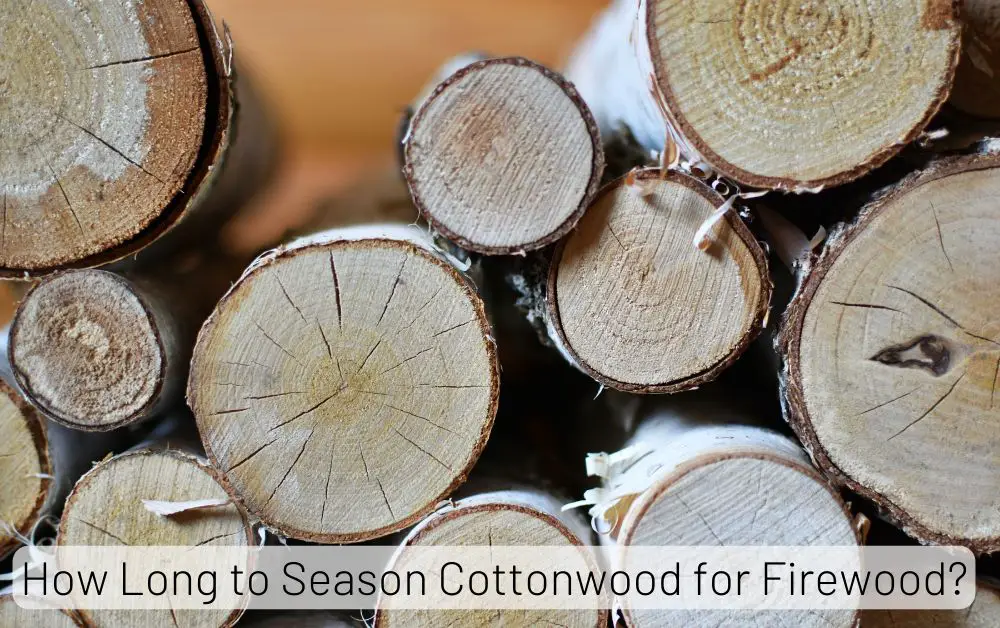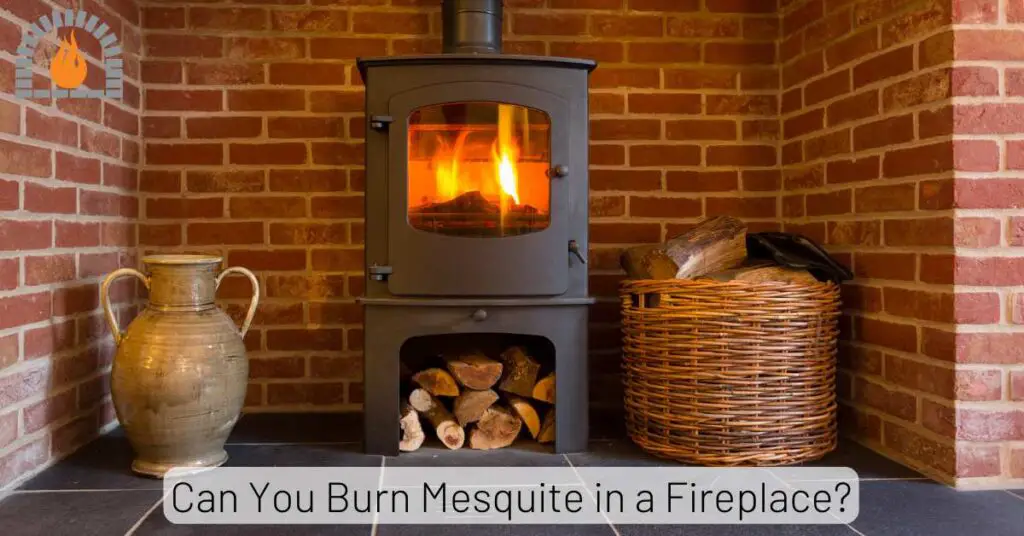When winter arrives and temperatures drop, many households turn to wood-burning fireplaces, stoves, and outdoor fire pits for warmth and comfort. However, burning uncured or “green” firewood, which hasn’t been dried to reduce its moisture content, can pose numerous health and safety risks.
While it might seem convenient to use freshly cut wood, the moisture in uncured firewood contributes to increased smoke, harmful pollutants, and home safety hazards.
Understanding uncured firewood risks and how to prevent them is essential for a safer, healthier wood-burning experience.
Burning uncured firewood generates a significant amount of smoke, which contains fine particulate matter (PM2.5), carbon monoxide (CO), volatile organic compounds (VOCs), and other hazardous air pollutants. These compounds are harmful when inhaled, especially in enclosed spaces like homes.
The health risks extend from mild respiratory issues to severe complications such as carbon monoxide poisoning, making it essential to understand the dangers of uncured firewood.
| Uncured Firewood Risks | Statistics |
|---|---|
| Increased Smoke Production | Smoke particles can be 30 times smaller than a human hair, leading to reduced lung function and health issues. |
| Creosote Buildup | Creosote is responsible for approximately 25,000 chimney fires annually in the U.S. |
| Inefficient Combustion | Unseasoned wood can have a moisture content of up to 100%, meaning half the log’s weight is water. |
| Financial Waste | Homeowners may spend more on heating costs and chimney cleaning due to increased creosote accumulation. |
| Health Risks from Particulate Matter | Each year, wood burning contributes to around 500 deaths and 15,000 emergency room visits from CO poisoning. |
What is Uncured Firewood?
Uncured firewood, also known as green wood, is wood that has recently been cut and still contains high levels of moisture. Unlike seasoned firewood, which has been dried or “cured” for six to twelve months, uncured wood is wet, heavy, and challenging to ignite.
This high moisture content results in more smoke and less efficient burning, meaning it won’t burn as hot or as clean as seasoned wood.
A simple way to recognize uncured wood is by its weight and appearance. Uncured wood is heavier due to water content, and the bark may still be firmly attached or green.
When burned, it produces a lot of steam and hissing sounds as the moisture evaporates.
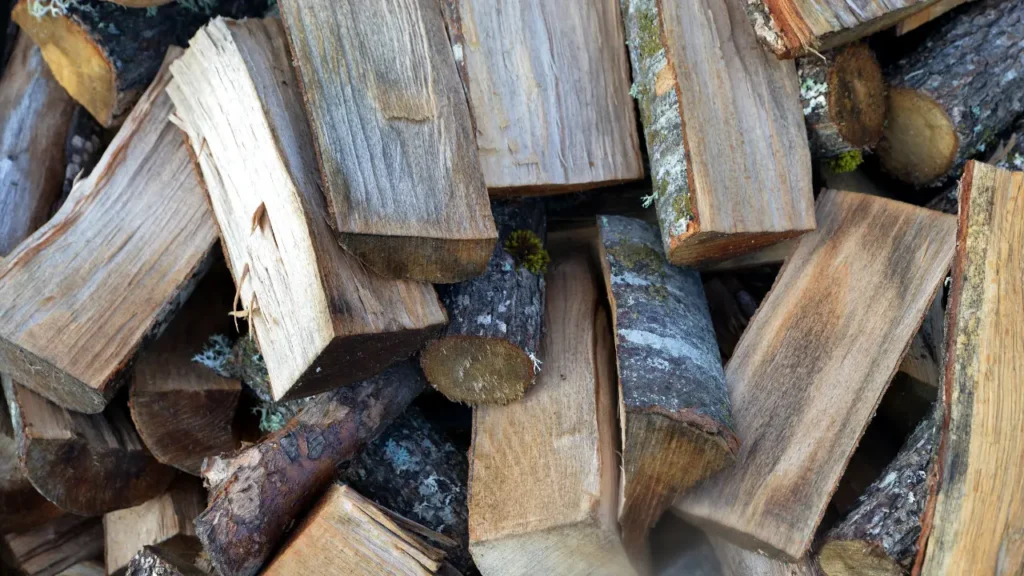
Uncured Firewood Risks
1. Increased Smoke Production
Uncured firewood releases a variety of toxic substances when burned, including polycyclic aromatic hydrocarbons (PAHs) and formaldehyde.
Smoke particles can penetrate deep into the lungs, leading to health issues such as reduced lung function, lung swelling, and chronic respiratory conditions like bronchitis and emphysema. Long-term exposure can increase cancer risk.
2. Creosote Buildup
Burning unseasoned wood leads to creosote formation in chimneys. Creosote is a highly flammable substance that can ignite, causing chimney fires that may reach temperatures high enough to crack chimney structures or ignite surrounding materials.
Chimney fires are responsible for approximately 25,000 home fires annually in the U.S.
3. Inefficient Combustion
Wet wood burns poorly, resulting in incomplete combustion.
This inefficiency not only wastes heat but also leads to higher emissions of harmful pollutants like carbon monoxide (CO) and particulate matter (PM).
Incomplete combustion can produce CO levels that contribute to around 500 deaths and 15,000 emergency room visits each year due to poisoning from household heating sources.
4. Financial Waste
Using uncured green firewood is economically inefficient. If half the weight of the log is water, significant energy is wasted just boiling off this moisture instead of providing heat.
This inefficiency translates into higher heating costs and potential expenses for chimney maintenance due to creosote buildup.
5. Health Risks from Particulate Matter
The fine particulate matter (PM2.5) produced from burning wet wood can lead to serious health issues, including asthma and heart disease.
Short-term exposure can cause respiratory symptoms, while long-term exposure increases the risk of chronic conditions and reduced immune function.
6. Toxic Chemicals in Green Wood Smoke
Uncured wood smoke contains several toxic chemicals, including formaldehyde, benzene, and acrolein. These chemicals are harmful to the respiratory system and can increase the risk of chronic respiratory diseases over time.
The toxins in green wood smoke can also irritate the eyes, throat, and skin, creating discomfort and potential long-term health issues for anyone exposed.
7. Impact on Children and Elderly Individuals
Certain groups are more vulnerable to the harmful effects of uncured firewood. Children, the elderly, and people with pre-existing health conditions are particularly susceptible to respiratory problems and other health issues from smoke exposure.
Children’s lungs are still developing, which makes them more sensitive to pollutants, while older adults often have weaker immune systems and may struggle to clear pollutants from their respiratory systems.
8. Environmental Risks of Uncured Firewood
Aside from health risks, burning uncured firewood contributes to environmental pollution. The extra smoke and unburned particles that escape into the atmosphere contribute to air pollution, impacting both the immediate and wider environment.
Sourcing uncured firewood often involves cutting live trees, which can contribute to deforestation and disrupt local ecosystems. Choosing seasoned wood or other eco-friendly alternatives helps reduce these environmental impacts.
How to Properly Cure Firewood
Curing firewood properly can take six months to a year, depending on the type of wood and the climate. Here’s how to cure firewood effectively:
-
Cut and split the wood: Smaller pieces dry faster, so cut the wood into manageable sizes.
-
Stack the wood: Arrange it in a way that promotes airflow, such as stacking it off the ground with spaces between logs.
-
Cover and protect from rain: Use a tarp or roof to keep rain off but ensure air can circulate around the wood.
-
Allow time: Patience is key, as the wood must dry thoroughly before it’s safe to burn.
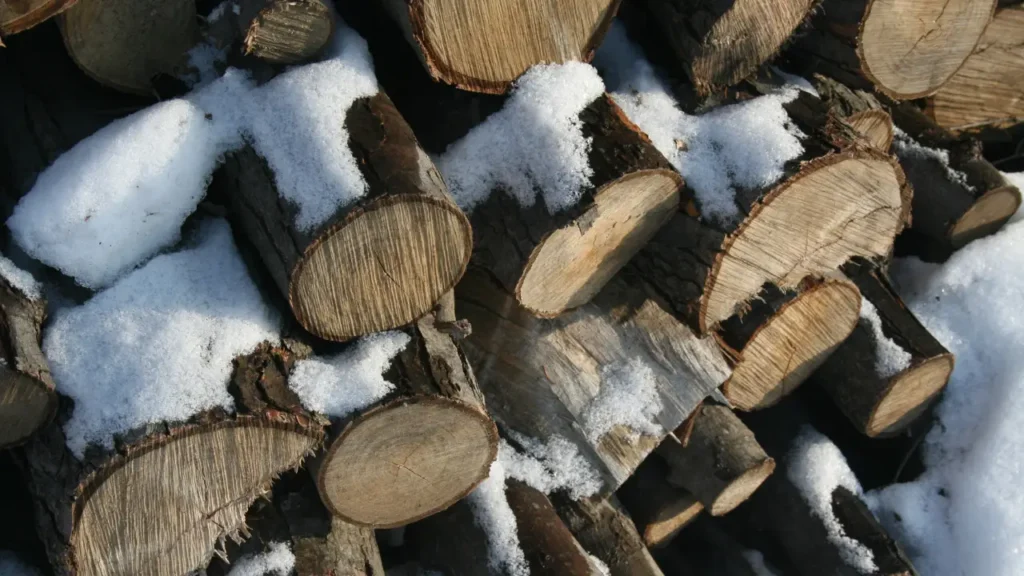
Testing Firewood Moisture Levels
To ensure firewood is dry enough for safe burning, you can measure its moisture content with a moisture meter. Ideally, firewood should have a moisture content below 20%.
If a moisture meter isn’t available, you can check by knocking two pieces together; seasoned wood will make a sharp sound, while uncured wood will sound dull and thud-like.
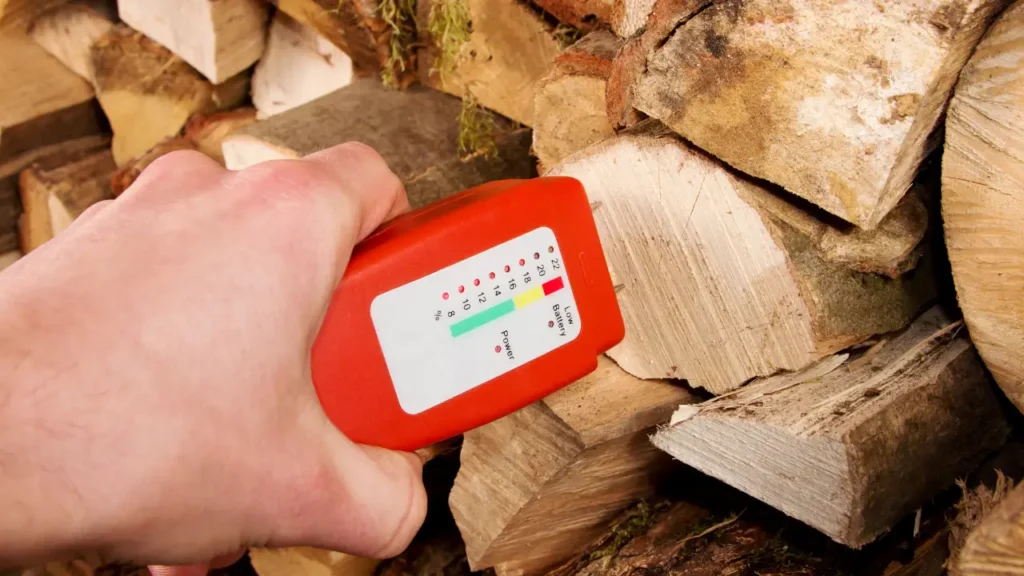
Safety Tips for Using Uncured Firewood (If Necessary)
If burning uncured wood is unavoidable, follow these precautions:
-
Burn small amounts: Small fires produce less smoke and pollutants.
-
Improve ventilation: Open windows slightly to increase airflow and reduce indoor pollutant levels.
-
Maintain your chimney: Regularly clean your chimney to prevent creosote buildup.
FAQs
Can burning uncured firewood make you sick?
Yes, burning uncured firewood can produce smoke that causes respiratory issues, eye irritation, and even carbon monoxide poisoning if ventilation is inadequate.
How long should firewood cure before burning?
Firewood should cure for at least six months to a year, depending on the wood type and local climate, to ensure it’s safe to burn.
What are the dangers of creosote buildup in chimneys?
Creosote buildup can lead to blockages and increases the risk of chimney fires, which can spread and damage your home.
Can green firewood damage my fireplace or woodstove?
Yes, burning wet green firewood produces excessive creosote, which can damage the fireplace or stove and require more frequent maintenance.
Are there eco-friendly alternatives to traditional firewood?
Yes, alternatives like wood pellets and eco-friendly logs offer cleaner, more sustainable options for wood burning.
Affiliate Disclosure: Fireplaceadviser.com is a participant in the Amazon Services LLC Associates Program. We may earn a commission when you click on certain links on this site and purchase.

Hello!! I am Jamal Khan. I often fix my home electric heaters and gas stove problems and research the common issues in the heating units to improve my knowledge and expertise. The aim of establishing fireplaceadviser.com is to share my expertise and knowledge with my audience.













